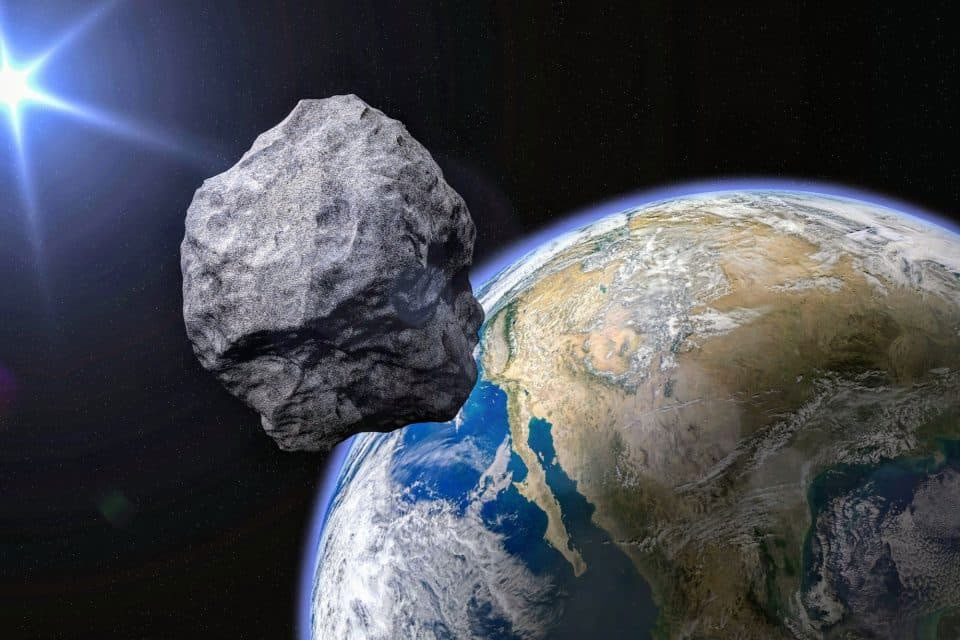Two large asteroids are set to safely pass by Earth this week, arriving just before Asteroid Day on June 30, according to a new report from the European Space Agency (ESA).
Although neither poses any danger to our planet, one of the asteroids was discovered only a week ago, underscoring the importance of enhancing our ability to detect potentially hazardous objects in the vicinity of our planet.
Asteroid 2024 MK
Asteroid 2024 MK, measuring between 120 and 260 meters, was discovered on June 16, 2024. It will pass by Earth on Saturday, June 29.
This sizable near-Earth object (NEO) will come within 290,000 kilometers of Earth – approximately 75% of the distance to the moon.
Despite no risk of impact, the proximity of 2024 MK emphasizes the need for improved detection techniques.
“There is no risk of 2024 MK impacting Earth. However, an asteroid this size would cause considerable damage if it did, so its discovery just one week before it flies past our planet highlights the ongoing need to improve our ability to detect and monitor potentially hazardous near-Earth objects,” noted ESA.
Amateur astronomers can observe 2024 MK with a small telescope or good binoculars in clear, dark skies on June 29, using ESA’s NEO toolkit for guidance.
Asteroid 2011 UL21
Asteroid (415029) 2011 UL21, is 2,310 meters in diameter, which makes it larger than 99 percent of near-Earth asteroids.
However, 2011 UL21 will not come as close to Earth, passing at over 17 times the distance to the moon on Thursday, June 27.
This asteroid’s steeply inclined orbit around the sun is unusual for such a large object, possibly due to gravitational interactions with a planet like Jupiter. Understanding these interactions is crucial, as Jupiter can deflect asteroids towards Earth.
“2011 UL21 is in an ’11:34 resonance’ with Earth. It completes 11 revolutions about the sun in almost the exact same amount of time in which Earth completes 34 revolutions (i.e. 34 years),” explained ESA.
“The result is a pleasant repeating pattern when you visualize the asteroid’s location relative to Earth over a period of 34 years while keeping Earth fixed in place.”
Asteroid Day 2024
Asteroid Day commemorates the largest observed asteroid strike in recorded history – the 1908 Tunguska event in Siberia. This UN-endorsed day highlights the need for planetary defense.
ESA, with the cooperation of its member states, is uniquely positioned to coordinate data, information, and expertise to understand and respond to asteroid hazards, contributing to global planetary defense efforts.
ESA’s Planetary Defense Office is undertaking several projects to enhance the detection, tracking, and mitigation of hazardous asteroids.
Hera mission
The Hera mission, launching later this year, will perform a detailed survey of asteroid Dimorphos following NASA’s DART mission’s impact in September 2022, contributing to developing a repeatable planetary defense technique. The Hera team will participate in Asteroid Day celebrations.
Flyeye telescopes
ESA is also developing a network of Flyeye telescopes with a wide field of view to scan the sky nightly for new hazardous asteroids.
The future NEOMIR satellite, positioned between Earth and the sun, will use infrared light to detect asteroids obscured by the sun’s glare.
Planetary Defense Office
Meanwhile, ESA’s Planetary Defense Office continues to monitor the skies. ESA’s fireball camera in Cáceres, Spain, captured a meteor on the night of May 18-19, 2024.
Catalina Sky Survey
Additionally, the Catalina Sky Survey in Arizona discovered a small asteroid on June 6, 2024, triggering an alert from ESA’s imminent impact monitoring system.
The asteroid flew over the Catalina Sky Survey telescope at just 1,750 km, making it the second closest pass of a known, non-impacting asteroid ever.
More about near-Earth asteroids
Near-Earth asteroids (NEAs) are a category of asteroids with orbits that bring them close to Earth’s orbit. They are classified based on their orbits into three main groups: Atira, Amor, and Apollo asteroids. NEAs can vary significantly in size, from just a few meters to several kilometers in diameter.
They are remnants from the early solar system, providing clues about its formation and evolution. Due to their proximity to Earth, NEAs are of particular interest for scientific research, resource exploration, and planetary defense.
Understanding their composition and trajectories helps in developing potential strategies to mitigate any future impact threats. Advances in technology have allowed for missions to visit and study these asteroids up close, such as NASA’s OSIRIS-REx mission to Bennu and JAXA’s Hayabusa2 mission to Ryugu.
—–
Like what you read? Subscribe to our newsletter for engaging articles, exclusive content, and the latest updates.
Check us out on EarthSnap, a free app brought to you by Eric Ralls and Earth.com.



 Parkinson’s Discovery Suggests We May Already Have an FDA-Approved Treatment
Parkinson’s Discovery Suggests We May Already Have an FDA-Approved Treatment